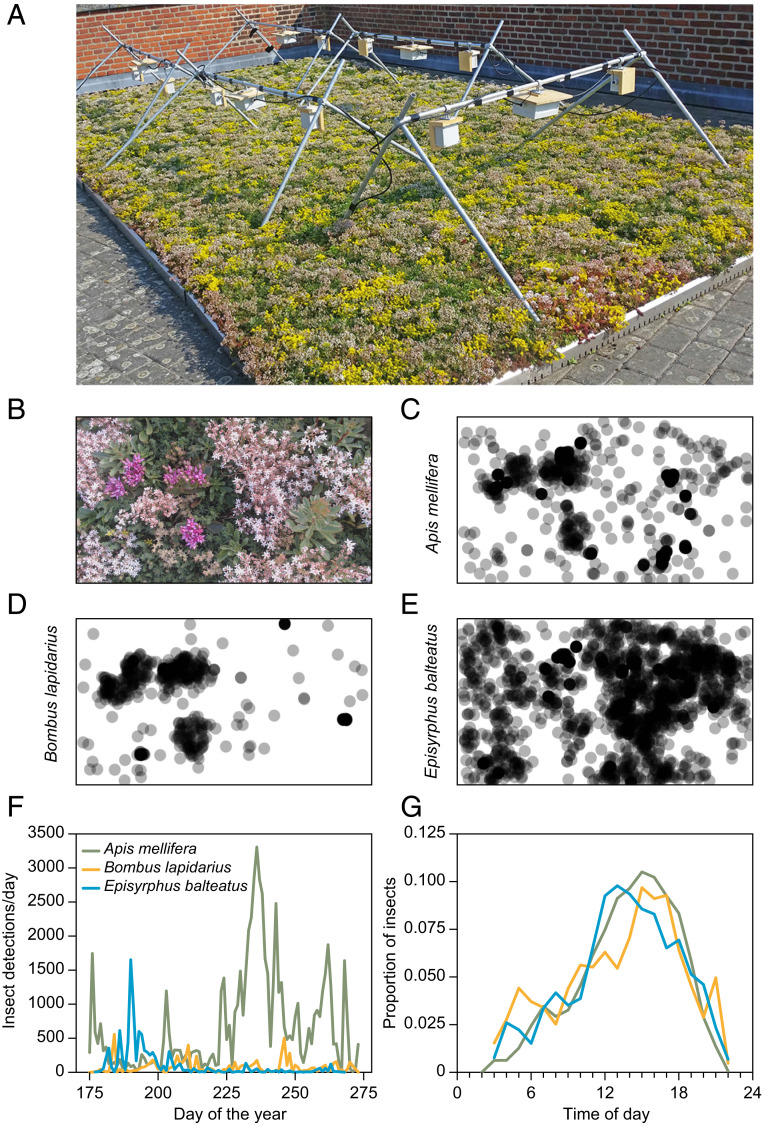Fig. 1.
We developed and tested a camera trap for monitoring flower-visiting insects, which records images at fixed intervals (45). (A) The setup consists of two web cameras connected to a control unit containing a Raspberry Pi computer and a hard drive. In our test, 10 camera traps were mounted on custom-built steel rod mounts 30 cm above a green roof mix of plants in the genus Sedum. Images were recorded every 30 s during the entire flowering season. After training a CNN (Yolo3), we detected >100,000 instances of pollinators over the course of an entire growing season. (B) An example image from one of the cameras showing a scene consisting of different flowering plant species. The locations of the insect detections varied greatly among three common flower-visiting species: (C) the European honeybee (Apis mellifera), (D) the red-tailed bumblebee (Bombus lapidarius), and (E) the marmalade hoverfly (Episyrphus balteatus). Across the 10 image series, the deep learning model detected detailed variation in (F) seasonal and (G) diurnal variation in the occurrence frequency among the same three species. Adapted with permission from ref. 45.

